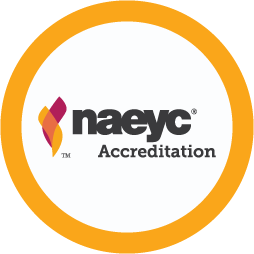The Power of a Policy: How Good Policies Make Great Programs

You are here
Ms. Liz is considering changing jobs. The director doesn’t line up substitute teachers when someone is out, and Liz often has too many children to supervise. She knows there are licensing laws about child care ratios and class sizes, but the program’s staff handbook doesn’t have a written policy about providing substitutes to make sure the law is met. Predictably, a child recently got hurt in Ms. Liz’s care. She feels terrible and very stressed by the lack of support and guidance, on paper and in action. Liz resolves to start looking for an employer with more supportive staffing policies and practices.
We tend not to think much about policies—until something goes wrong! And yet many aspects of our lives are governed by policies. Knowing whether a pet is allowed in our apartment, figuring out how much we’ll be charged for a late credit card payment, determining how often we should get our car inspected—policies inform our everyday decisions and actions. Policies are written statements about what an organization intends to do (or not do) about some aspect of how it relates to people.
In early childhood programs, written policies let staff, families, and others know how the program handles important issues. While not exhaustive, a few key areas that call for written policies include
- conditions of staff employment (work hours, salary and benefits, continuing education expectations)
- how children are cared for, guided, and educated
- ways to ensure a safe, healthy, and well-informed learning community (staff CPR training, hand washing, and regular head counts of children)
- guidelines for communication between families and program staff, including expectations for family engagement, documentation of child learning, and approaches to confidentiality
A program’s written policies should also inform both staff and families about important state regulations (such as legally permissible staff ratios and group sizes and mandated reporting of child abuse) and national recommended practices (like NAEYC’s Early Learning Program Accreditation Standards and its Code of Ethical Conduct) that the program either must comply with or chooses to adopt in its daily operations.
During my more than 30 years in early education, first as a program owner/director and a mom with children in care, then as a manager and assessor in NAEYC’s program accreditation system, I’ve seen how important good written policies are in creating and supporting great programs. In this article, I share examples of some program elements that warrant thoughtful written policies, describe why policies are needed, and offer some tips for how to get started on writing good policies.
The Role of Written Policies in NAEYC’s Early Learning Program Accreditation Standards
Policies appear prominently in NAEYC’s Early Learning Program Accreditation Standards. Accreditation is a mark of quality, earned by demonstrating consistent, effective practices both in classrooms and in overall management. In our work with programs going through NAEYC accreditation, we find that programs cannot maintain high-quality practices (or keep high-quality staff) without clear policies that help families, staff, and children know what to expect. Accreditation standards capture important policies related to quality of curriculum and child assessment (Standards 2 and 4), staff work environment and compensation (Standard 6), family engagement (Standard 7), health practices (Standard 5), and program management (Standard 10). When I was a program owner/director, I went through several cycles of NAEYC accreditation, and each time I reviewed, updated, and improved my written policies.
Good Policies Support Great Work Environments
Like Ms. Liz in the opening vignette, staff members can feel unsupported, confused, and stressed when a program does not have written policies in place. These feelings can cause them to question their role and fit within the program.
Policies need to be in writing so everyone understands them and they are applied fairly and consistently. Staff members usually receive the program’s staff-related policies in the form of a staff handbook. Ideally, program leaders discuss policies when a staff member is hired and review important policies regularly in staff meetings. Policies work best when the people they apply to have opportunities to ask questions, get clarification, and suggest improvements based upon their experiences.
Staff members can feel that they are in a great work environment when the program has policies that support them physically, psychologically, and professionally.
- Policies provide physical support by assuring consistent work hours, sick leave and health insurance benefits, and suitable seating indoors and out (so staff are not expected to be standing all the time!).
- Policies contribute to psychological support by providing clear job descriptions and performance expectations, a break room, grievance procedures, and available substitutes so staff do not have to work with too many children.
- Professional supports include policies providing education and training benefits, coaching and mentoring on the job, and clear salary scales with pathways for professional advancement.
Good Policies Ensure Fair and Equitable Treatment of Children
Roberta is troubled that she has been called several times by the director of her son’s child care center and told to pick up 3-year-old Andre, who has been throwing toys in class. Last weekend she shared this with Jason, the dad of Andre’s classmate Maggie. “What?” Jason said. “Maggie did that too, and they never sent her home for it!” Roberta checks the center’s family handbook and finds no policy about when and why a child may be sent home for behavior issues. She needs to raise her concerns with someone, but the handbook does not include a policy about who she can talk to if she does not agree with the director’s decision. Roberta is concerned about Andre’s behavior, but this does not feel fair. It makes her question whether this is the right program for their family.
Possibly the most important policies in a program are those related to child guidance and discipline. These policies protect child safety and inform everyday practices and decision making. They also provide a framework for children’s social and emotional learning and development, including preschoolers’ relationships with teachers and classmates and their development of self-regulation.
A good guidance and discipline policy should describe positive discipline techniques such as acknowledging, modeling, and scaffolding positive behaviors; setting up the environment to encourage positive behaviors and avoid conflicts; and effectively managing transitions. These policies must also describe discipline practices that are harmful and may not be used, such as physical punishment, psychological abuse, and coercion (see “Discipline Practices that May Not Be Used in Early Learning Programs,” below). Because there are times when a child may show persistent challenging behavior, the discipline policy needs to include information about the formal steps taken to address such behaviors (family consultations, referral for intervention services, implementation of individual behavior plans) before a decision is made to exclude a child from care temporarily (suspension) or permanently (expulsion).
While guidance and discipline policies exist to protect children, they also protect staff by making clear what staff can and cannot do to respond to a child’s behavior. This is why programs must provide staff and families with clear, specific written guidance policies. These policies are so important that they should be discussed in detail during employee orientation and reviewed verbally with all families at enrollment. It is wise to revisit the policies regularly in staff meetings and at formal family events (such as “back to school” nights) to gather feedback about how they can be improved.
Discipline Practices that May Not Be Used in Early Learning Programs
Staff and families must be provided with specific written guidance policies that make it clear how staff can and cannot respond to a child’s behavior. These policies protect both children and staff. Written policies should describe practices that may not be used because they are harmful to the child, such as the following.
- Examples of physical punishment: Shaking, hitting, spanking, slapping, jerking, squeezing, kicking, biting, pinching, excessive tickling, and pulling of arms, hair, or ears; requiring a child to remain inactive for a long period of time.
- Examples of psychological abuse: Shaming, name-calling, ridiculing, humiliation, sarcasm, cursing at, making threats, or frightening a child; ostracism, withholding affection, seclusion.
- Examples of coercion: Rough handling (shoving, pulling, pushing, grasping any body part); physical restraint (forcing a child to sit down, lie down, or stay down) except when restraint is necessary to protect the child or others from harm; physically forcing a child to perform an action (such as eating or cleaning up).

Good Policies Create a Healthy and Educational Community Among Children, Staff, and Families
Director Mai Linh is worried but prepared. Her county’s health department warns that another surge of flu is coming. The COVID-19 pandemic taught her the importance of communicating critical health policies to her staff and families, both face-to-face and in writing.
At the next all-staff meeting, Mai Linh reviews the program’s staff sick leave policy and its illness prevention policies, such as handwashing and sanitizing classroom surfaces. Through the weekly newsletter, the big whiteboard in the lobby, and face-to-face chats, Mai Linh reminds families about the program policy to keep sick children out of group care as an essential way to minimize risk for everyone. Mai Linh has found that when policies are clear and fair, families and staff can effectively work together. As a result, everyone stays safe, and children can continue to play and learn.
Policies about health, safety, and educational practices are equally critical to both staff and families. Programs have policies that are mainly addressed to families (but involve teaching staff as well). Such family-focused policies may include
- when a child is too sick to be in group care
- who may pick up a child at the end of the day
- how often families can expect to receive documentation of children’s activities and projects
- how family members are invited to engage with class learning activities, such as story times, cooking projects, class or program celebrations, and field trips
- how and when child assessments are conducted and communicated with families
For this reason, staff should be familiar with their program’s written family handbook.
Good Policies Are Updated to Meet Changing Program Needs
Good policies provide clear instructions for everyone to create the best possible care and education environments at one time. However, policies are not permanent. The COVID-19 pandemic provided a vivid example of how new policies must be created when changes affect our programs, our communities, or even our whole world. Early learning programs may make changes (adding new classes, changing to a different curriculum) that call for revised policies. But even when a program does not change, the world will change around it. Communities welcome new families, technology changes how we teach and communicate, and new threats emerge to our environment and our health. Great programs make good policies when everyone contributes their ideas and perspectives to create clear guidelines for how children, staff, and families may thrive together.
Ready to Improve Your Policies?
Here are some tips for getting started.
- Start with your staff. Your staff members have to implement your policies through regular practices. Who better to tell you what isn’t working, isn’t complete, or isn’t quite up-to-date? Schedule time in some staff meetings to ask what problems team members are having with following program rules or meeting job expectations. Listen carefully to both positive and negative feedback, and consider whether your policies and procedures are developed well enough to address all current situations. Ask staff members for suggestions, then collaborate with them to try out suggested changes before you fully adopt them.
- Listen to your families. When a family member comes to you for clarification about a program policy or related procedure, ask yourself if others might also not understand that issue. If you are explaining it more thoroughly to one family, consider revising the written language for all.
- Find new ways to communicate policies. When I ran a program, I came to understand this simple truth: nobody read the staff handbook or the family handbook from start to finish. Consider highlighting key policies briefly (“Policy of the Week!”). As you highlight a policy, invite comments, questions, and suggestions for improvement.
- Network professionally, and when you do, bring up policies. Administering an early care and education program can be stressful and lonely. Find a network in your community or state, and carve out time to participate. When you do, ask others about their policies and practices. If you are a NAEYC member, tune in to our HELLO community (HELLO.NAEYC.org), where you will find questions asked and solutions shared in our Open Discussion Forum.

Photographs: © Getty Images
Copyright © 2023 by the National Association for the Education of Young Children. See permissions and reprints online at NAEYC.org/resources/permissions.
 This article supports the following NAEYC Early Learning Programs standards and topics
This article supports the following NAEYC Early Learning Programs standards and topics
Standard 10: Leadership and Management
10E: Personnel Policies
10F: Program Evaluation, Accountability, and Continuous Improvement
Susan M. Hedges, PhD, is a psychologist with training in developmental psychology as well as psychometrics. She has taught college courses in child development and child care practice and for 15 years owned and operated a NAEYC-accredited child care program in Maryland. Dr. Hedges joined NAEYC in 2006 to develop and implement the newly revised NAEYC Early Childhood Program Accreditation site visit assessment. She has also served as a NAEYC assessor since that time, visiting many programs to observe and evaluate policies and practices.